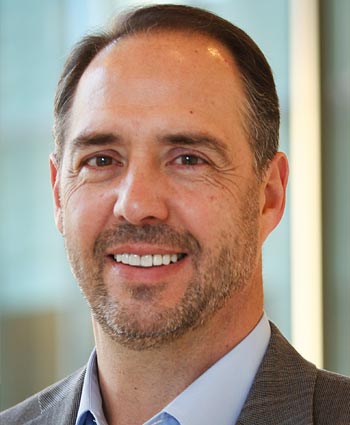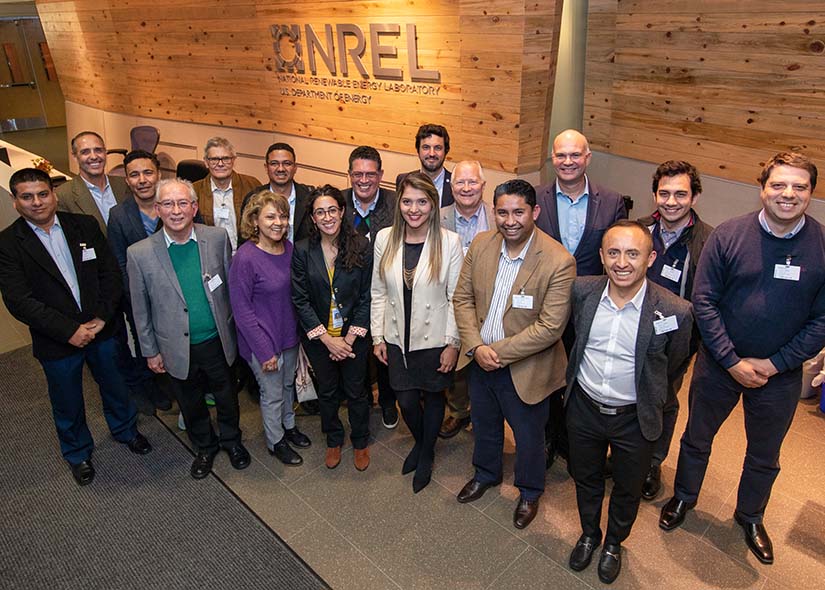Riccardo Bracho Advises Energy Transitions in Countries Worldwide, Including His Native Mexico
After Two Decades Working in Finance, NREL Analyst Riccardo Bracho Pivoted to an Energy Career. Today He Leads Analysis of International Power Sector Transformations
This story originally published on JISEA.org.

In 2007, Riccardo Bracho decided to retire and play golf. The equities and fixed-income investment manager had been overseeing international hedge funds in Boulder, Colorado, at the time and was not feeling fulfilled.
However, Bracho's "retirement" turned into a career shift when President Barack Obama took office and started launching initiatives to advance renewable energy. Bracho became inspired to learn more about the energy transition and apply his financial knowledge to support the deployment of renewable energy technologies. In 2009, he joined the first cohort of the recently created master's program in global energy management at the University of Colorado–Denver.
His decision to transition to an energy career eventually led him to the National Renewable Energy Laboratory and the Joint Institute for Strategic Energy Analysis (JISEA) to support international power sector transformations through the 21st Century Power Partnership (21CPP). The program offers knowledge sharing, best practices, and technical expertise for implementing clean energy solutions in countries around the world. Bracho recently won an NREL Staff Award for his outstanding performance supporting international energy transitions.
From Mexico to the United States
Bracho grew up in Mexico City, Mexico. He really liked numbers as a kid and in high school started focusing on a math-related career. In college, he worked full time, studied financing, and was on the national rowing team. Most days ended in pure exhaustion at 11 p.m.
In 1985, the historic 8.1-magnitude earthquake hit Mexico City that reduced many buildings to rubble, shut off electricity for millions, and killed between 10,000 and 30,000 people.
The city's economy had already been suffering, and Bracho decided it was time to seek other opportunities in the United States. He moved to Connecticut and started working for the investment division of CIGNA insurance. He decided to go to the University of Connecticut to get his master's in finance—the start of two decades working in investment banking.
Start of an International Clean Energy Career
Bracho's transition to a career in energy felt surprisingly natural. His international background, financial experience, and newly acquired knowledge in global energy management made him the perfect addition to NREL's advisory team for the U.S. 1603 Treasury Program—what has been proclaimed one of the most successful public policy initiatives for the advancement of renewable energy in U.S. history.
Soon after, Bracho started supporting international energy initiatives in India, Mexico, and other countries.
NREL supports several initiatives and partnerships to help advance international energy transitions, including 21CPP, which is managed by JISEA. NREL and JISEA provide countries with technical, policy, and regulatory assistance for power sector transformation, including regional and national modeling of electric systems under high levels of renewable generation for countries to understand future scenarios and impacts of investment decisions.
"We're living in a turning point where big decisions need to be made and big investments need to be made for transformation in the power sector to help mitigate climate change," Bracho said. "By working with developing countries through the international programs at NREL and JISEA, I contribute a small part to influencing those decisions and needs."
Connecting With His Roots Through Mexico's Energy Transition
Much of Bracho's work with 21CPP is leading energy analysis and recommendations for Mexico. The country is rich in wind, solar, and geothermal resources but has traditionally relied on expensive fossil fuels, including domestic fuel oil and imported natural gas.
Bracho manages a relationship with the Mexican government and private sector and creates teams of technical and international experts to inform clean energy policies, regulation, planning, technical solutions, and investment decisions.
In 2015, Mexico committed to producing 30% of its electricity from renewables by 2021 and 35% by 2024. From 2014 to 2018, the country increased production of clean electricity at a rate of 4.8% every year. During that time, Bracho's team helped Mexico make great strides. They established norms for the wholesale power market for buyers and sellers to trade energy and energy products at best economic prices; analyzed compensation mechanisms for distributed generation; created the independent market monitor; and modeled areas with high wind and solar resource potential to expand transmission. Now many regions of Mexico are enjoying the fruits of the energy system transformation.

A Bigger Voice, Banded Together
Since a new administration was elected in Mexico in 2018, Bracho has shifted the Mexico assistance strategy to focus on partnering with subnational governments that want to bring social economic welfare through clean energy reform and innovative programs. His team also works with a small subsection of the national utility to model future scenarios with greater renewables deployment and energy storage to understand economic and power supply trade-offs.
For example, Bracho's team partnered with Baja California Sur to model and evaluate the potential impacts of increasing wind and solar generation on their bulk power system. As modeled, utility-scale wind and solar could meet the load and operational reserve requirements every hour of the year 2024.
The team also recently studied potential opportunities to increase renewable energy and energy efficiency deployment in the Yucatan Peninsula, which is facing an energy crisis due to scarce natural gas supply, insufficient transmission capacity across the country, and increasing electricity demand.
The 21CPP report offers actions that the Peninsula can take like regional clean energy auctions or demand aggregation for distributed generation photovoltaic systems.
"Right now the biggest opportunities are programs like community solar, distributed generation, energy efficiency standards, or electromobility," Bracho said. "We will also continue to move the needle to ensure the next version of the energy reform keeps the country moving in the right direction."
Last Updated May 28, 2025
